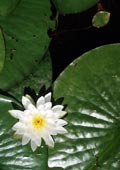BWCA
-
June 2010
Page
2: Days 1-3
Little Indian Sioux River to Sandbar Island
Day 1 – Monday, June 7 – Entry
The shuttle driver who takes me from EP16 (Moose River N.) to EP14 (Little Indian Sioux River) is a student
at UW-Madison. He tells me a bit about his workday and it gives me hope that today’s “kids” have a strong
work ethic. This is the final leg of the portal. He drops me off, we unload my gear, and I’m ready to enter the real world.
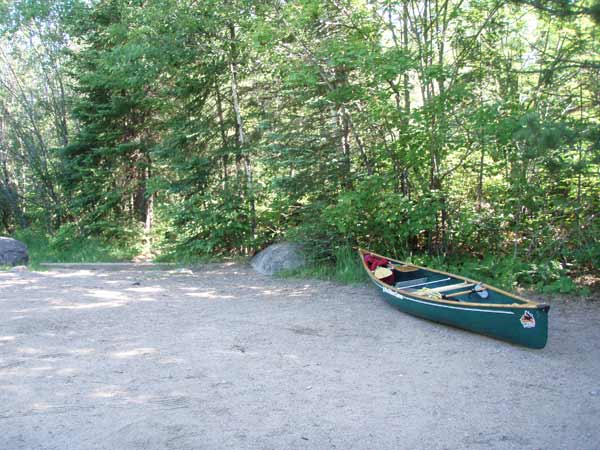
The first portage is other-worldly, but the weight of my gear keeps me grounded, so to speak. The main pack is about 55 pounds, the
daybag is 10 and the miscellaneous gear bag is another 10. I lug them in one trip and on the second trip I take the boat, with the
tent and tarps strapped onto the Knu-Pac – 65 pounds total. Loading and carrying the Knu-Pac take a little getting used to,
partly because the weight is higher, but it’s much easier on the body than traditional portage pads. I enjoy using it throughout the trip. I load up the boat, ready to take the first paddle strokes of the trip.

There are no bugs to speak of but quite a few flies, which aren’t bothersome. Mosquitoes buzz above the mesh
of my tent most nights, but there aren’t many. During the entire trip I get only about half a dozen mosquito bites
(four of them at one time) and see a total of zero black flies. I picked up two ticks and after careful searching could
not find any more.
It’s a nice day and the Little Indian Sioux River is a very pleasant paddle. Typical sights are lone mergansers and
yellow lilies.


I take some time to check out Devil’s Cascade. Even in low water conditions it's both noisy and impressive.
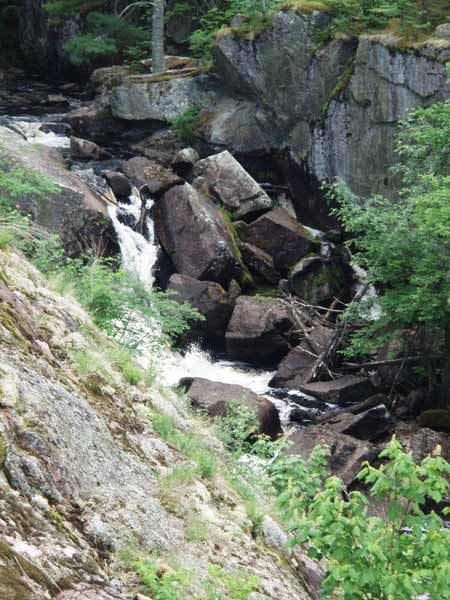
I cross tracks with a ruffed grouse on the Devil’s Cascade portage trail. He’s none too happy to see me but gives
me a nice photo op:

Downstream from Devil’s Cascade there’s a beaver dam that should be pulled over or portaged. I take the express
route and discover a few inconveniently placed rocks below the surface.

I stop at site 12 on Loon Lake (C0058). It’s mediocre, with the fire area up on a high knoll and just barely enough room up
there for my Sierra Designs Zeta 2 tent. It’s a steep climb to get water, but a nice little beach for landing and
swimming. There’s a lot of what looks like yellow algae on the water. Later I conclude it’s pine pollen.
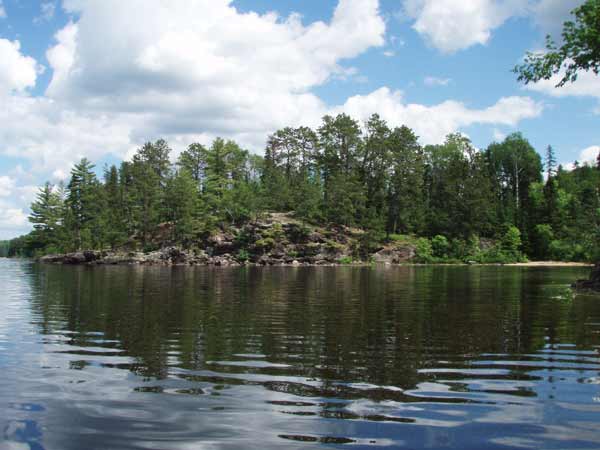
Note: campsite numbers are the ones painted on the latrines. The figures in parentheses indicate the site numbers
from this commonly-used file: bwca-camp+port-wpt.gdb, located at this site: http://w3.cs.jmu.edu/arch/hobbies/camp/maps/bwca/
I can’t find the earphones, so I can’t use the MP3 player or the weather radio. Shoot ….
I have the usual first-day urge to bail out. I’m tired and would like to layover but I don’t want to stay at this site
any longer than necessary.
Day 1 summary:
Total distance 8.2 miles in 5:05
4 portages of 255 rods in 2:30
- LIS 40 rods, 15 min.
- LIS 65 rods, 35 min.
- Upper to Lower Pauness 40 rods, 32 min.
- Devil’s Cascade 110 rods, 1 hr. 8 min. including photo time
Day 2 – Tuesday, June 8 –
Is This What Alzheimer’s Is Like?
Happy birthday, Dad! At 88 you probably couldn’t have done this, but it’s nice to have you perched on my shoulder.
I’m up at 6:30 and gone at 8:30 – the usual two-hour process for breaking camp.
My target is Snow Bay but a major mental lapse results in a lost travel day. I check the map after leaving camp and
head down the west arm of Loon Lake instead of the north arm. I assume the rail portage at the end is the Beatty
portage, but it turns out to be the Loon River portage.
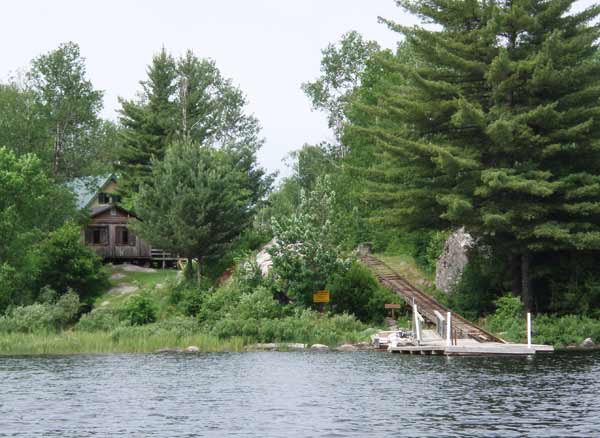
I schlep my pack about 75 rods along a little-used trail and it occurs to me that this isn’t the popular route I’m
expecting. I meet the attendant back at the portage landing and he says a lot of people make the same mistake. My error was assuming I knew where I was going, which made me forget about checking my course with that
new-fangled geographic directional device called a compass, one of which was readily at hand. So I end up back
where I came from. Although it’s not yet noon, the wind is coming up, and with thunderstorms in the forecast I decide
to lay up for the day. I figure Lac La Croix (LLC) would be pretty challenging and I'm fed up with
myself for making such a brainless error.
The upside is that I find a wonderful campsite at Loon Lake 24 (C0031).
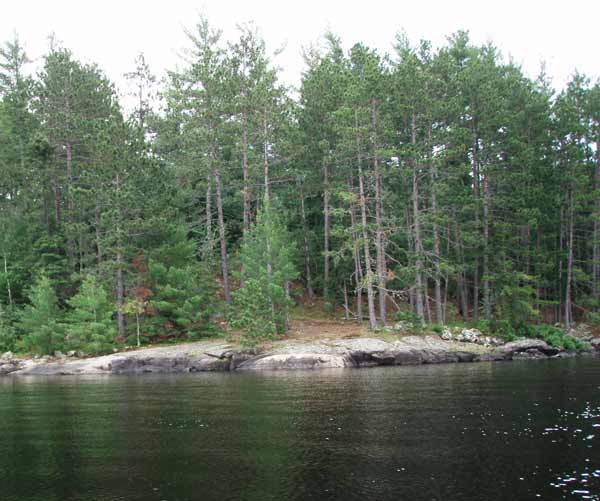
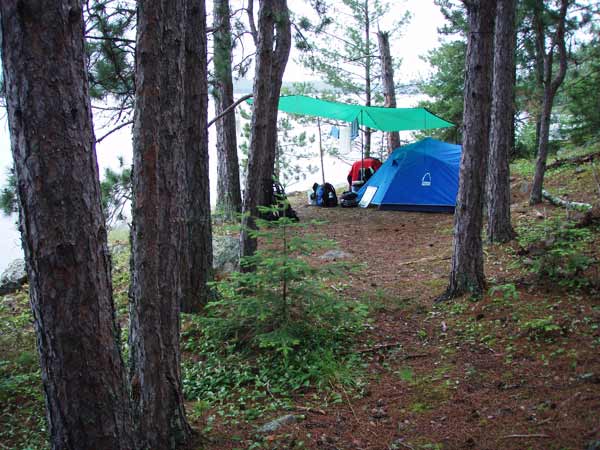
I check out the campsite across the bay (Loon 28 or C0032) and find it has no discernible tent pads. The fire area has
several rocks and no logs, and there’s a rock cairn marking the sloped, rocky landing. It has apparently not been used in a long time.
It rains intermittently all afternoon, with fog and heavier rain toward evening. All is quiet and cloudy by sunset.
I see a loon stretch out its neck and let out an odd squawk. The eagle overhead seems to be a good reason. I realize
these birds are competitors and wonder about the population dynamics of fish and fish-eaters.
Despite losing a day, I find my attitude is better. I have no more thoughts of bailing out and feel more patient and
grounded. There seem to be several stages in the process of moving into a new setting:
- Anticipation/excitement
- Resistance
- Acceptance
- Involvement/participation
- Absorption
I seem to have gotten through the resistance part, though it hangs on another day or two as I move into the next
phases. As I expect, it takes a few days for me to get absorbed in this very different way of life.
Day 2 summary:
Total distance - 6 miles in 3:00
Day 3 – Wednesday, June 9 – Back on Track
Up at 6:30, leave around 9:00. Some hemming and hawing due to overcast and west wind. It’s blowing 5-10 with puffs to 15. No problem on Loon, but on LLC it’s 10-15 with puffs to 20+. It’s actually from the north, thanks to the wind tunnel effect of the land forms.
I reach the Beatty portage and enjoy its park-like quality.
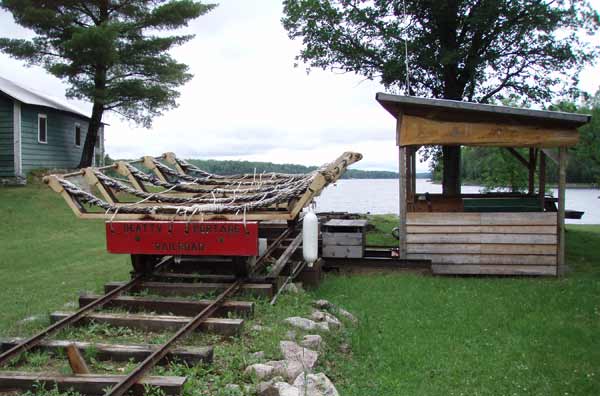
The wind is stronger at the dock and I have to tie the boat to keep it from being blown back.

I paddle as much in the shelter of the Canadian side as possible and at one point I see a group of cabins on an island. I wonder if this is the famous Zup's outfitter. I get to Sandbar Island and camp at site 15 (C0005). There’s a nice, grassy tent pad but in a small depression with some big widow-makers behind. The site looks like it hasn’t been used in a long time.

There isn't much more to say about this place. It's a dreary day and the thing that most gets my attention is the poison ivy growing across the steep approach to the site.
Tomorrow is my old friend Len’s birthday, or would have been if he’d lived this long. His sister told me he died in early 1999 – not quite 50. I wonder how many of my other old friends are no longer among the living.
Day 3 summary:
Total distance 6.2 miles in 3:15
1 portage of 50 rods in 38 min.
Tomorrow:
On to the big water
Previous
Back
to top
|
